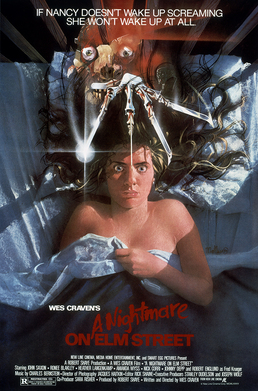The iconic legacy of this horror film has lasted for years to come, and still continues as a reminiscent film in modern media.

The modern film industry has a habit of running interesting concepts dry, specifically through the production of reboots and never-ending franchises. The original works that pave the way for these series are often forgotten and overlooked by their successors. A prime example of this is the “A Nightmare on Elm Street” franchise.
This is not to say that remakes or sequels are necessarily terrible nor do they live up to the standards the originals do. In fact, there are many reimagined versions that can be deemed superior to their parent films. However, there is no denying the influence earlier films have on pop culture.
“A Nightmare on Elm Street” (1984) has left behind a legacy that can be observed in films in and out of the horror genre. Recently, this influence is reflected most notably in Netflix’s hit series “Stranger Things” (2016-present). The Duffer Brothers, the show’s creators, have cited the film and it shows in the best way possible. 40 years later, the impact this film has had is still manifesting itself — and successfully at that. Viewers can make connections between Vecna and Freddy Krueger, along with Eddie Munson and Rod Lane. Another scene to add to the list is the segments of the Demogorgon/Krueger emerging from the wall. This is one of the most popular streaming series of all time, so you are likely to enjoy the film if you love the show. “Stranger Things” has become incredibly iconic, and I don’t think the producers would want us to forget the films that helped it come to life.
Smaller parallels can be made to “It,” both the 1990 and 2017 versions and “Inception” (2010). Glen’s death is visually similar to Beverly’s nightmarish experience in the bathroom. “Inception,” an incredibly well-received film, has an ambiguous ending the same way the film does. Both have themes of being unable to differentiate between dreams and reality, a motif executed in dystopian movies, which have become increasingly popular. If we love these movies, how can we not love this one?
After a long run, sequels tend to lose the magic that goes into production. Audiences are drawn in by the name associated with the films themselves and love them for the same reason — not because they stand alone as great films. It’s always refreshing to go back to where it all started. This might even add a deeper sense of appreciation for the later films. This classic movie has all of the elements of a horror film: suspense, gore, jumpscares and those overwhelming feelings of frustration and disgust. The tense music, eerie sound effects and atmospheric lighting help create a tangible, cinematic experience. It sets a precedent for future films in the same genre. It’s not just about having action-packed scenes or crazy scary moments that serve no real purpose. There is a plot, it moves forward and leaves you wanting more. There is time for characterization and time to fall in love with them — you pity them and don’t want them to die. There is room for interpreting Krueger as a metaphor for feeding into negativity and allowing it to consume you rather than ignoring it. All in an hour and a half.
“A Nightmare on Elm Street” is more modern and relevant than ever. We should try hard to keep it alive! Don’t blur the line between fantasy and reality by letting this film be just a dream among horror lovers. Its legacy looms large.








